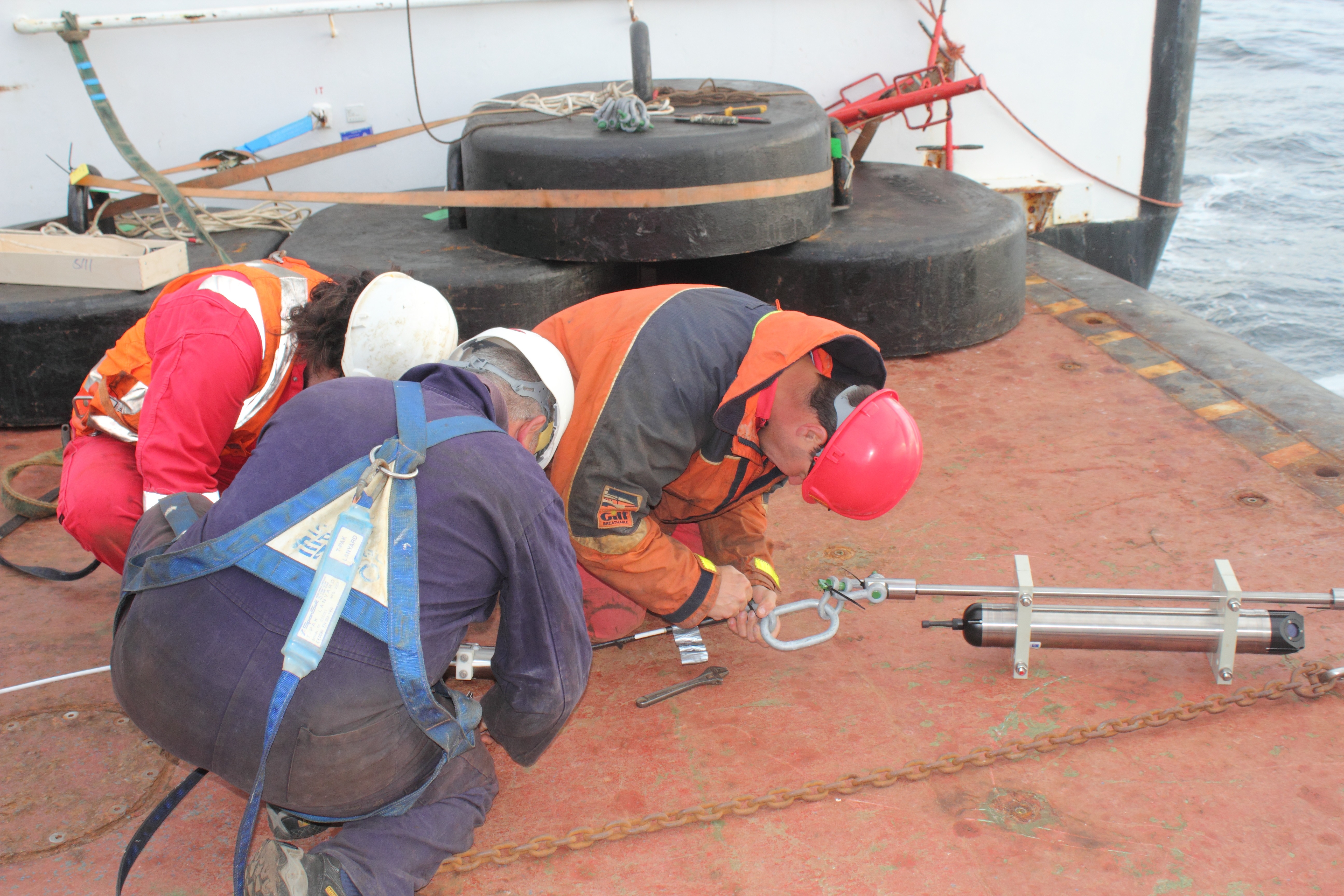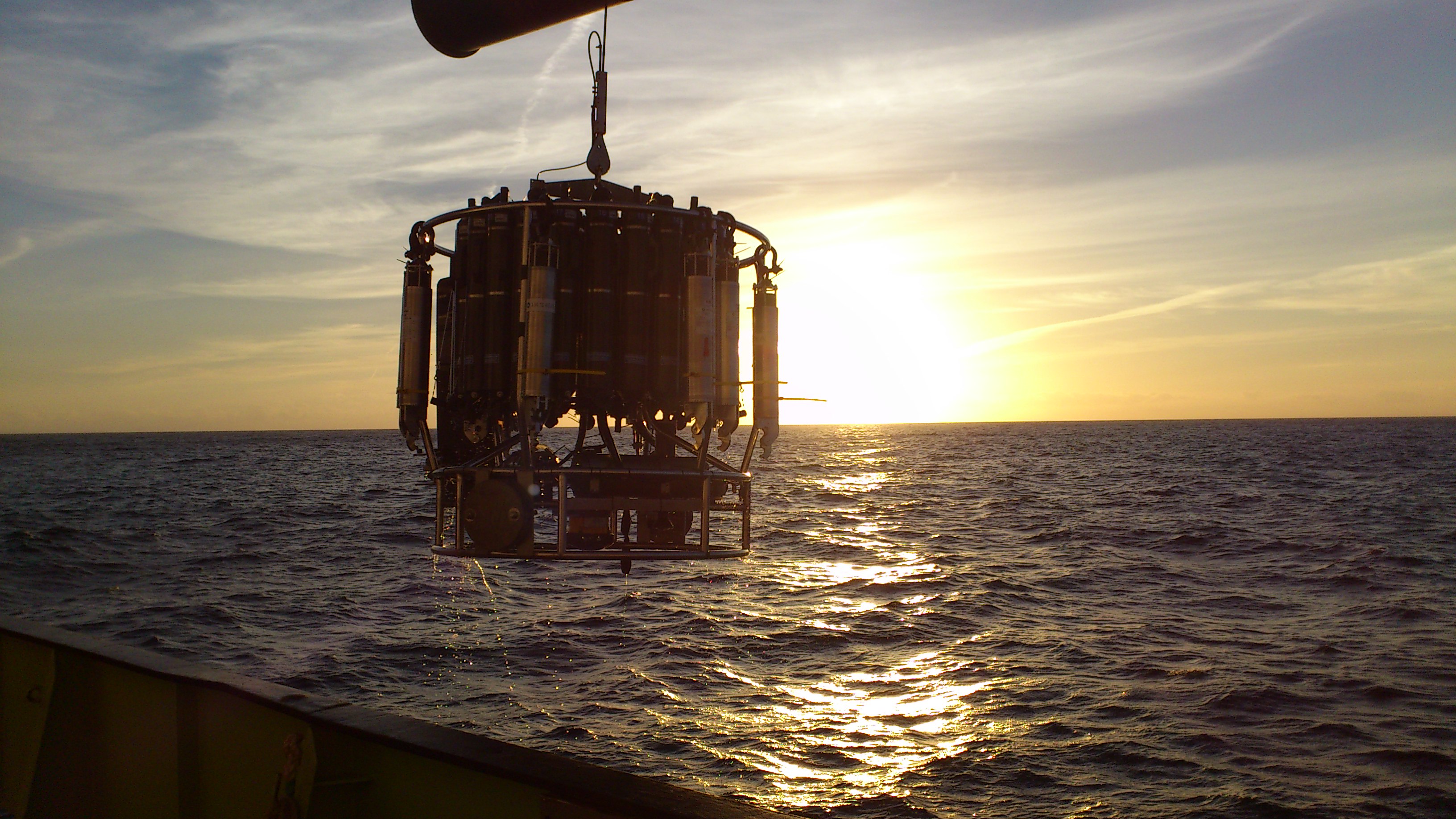What can we measure in the ocean?
The first stage in observing these processes, we first have to understand what we can actually observe using the instruments available to us. Two crucial properties are the temperature and salinity (saltiness) of the water.
Temperature
The temperature of seawater is measured using instruments called thermistors. The temperature of seawater can be measured to great accuracy with carefully calibrated modern thermistors - down to variations of 0.0001° C.
 Deploying temperature sensors: The technicians attaching temperature sensors to the OSMOSIS moorings in 2012
Deploying temperature sensors: The technicians attaching temperature sensors to the OSMOSIS moorings in 2012
We measure temperature from a number of different platforms in the OSMOSIS project. Firstly, the mooring array deployed in the North Atlantic had over 300 thermistors attached to allow us to observe the three dimensional structure of the temperature field. Secondly, the 2 gliders tracking around the site also measure temperature. Thirdly, the SeaSoar towed behind the Discovery on the 2012 cruise measures temperature over a yo-yoing path behind the ship. Fourthly, the CTD unit on the ship measures temperature from the surface to the sea-floor. This instrument is considered the most accurate and the other instruments are calibrated against it. We also use satellite data, which can measure the temperature of the ocean surface from space.

Salinity
Salinity is a measure of the saltiness of ocean water. The saltiness is due to a range of dissolved materials in the water. Sodium-chloride (or table-salt) is a major component of this, giving seawater its distinctive salty taste. However, many other chemicals are also dissolved.
Observing salinity directly is not practical, as it requires specialised laboratory equipment. Instead we measure the conductivity of the water, as the presence of the dissolved material changes the way electricity flows through water in comparison with fresh water. We then use formulas developed with laboratory measurements to give the salinity where the conductivity and temperature have been accurately measured. The historical process which led to this development is described here).
We placed 61 instruments capable of measuring conductivity and temperature on the OSMOSIS array.
Density
The reason we go to such trouble to measure temperature and salinity is that together they determine the density of seawater. The density then plays an important role in determining where the water will flow.
In an everyday sense we would probably refer density as its 'weight'. Denser (heavier) water prefers to lie underneath less dense (lighter) water. If heavier water lies above lighter water, then any perturbation will cause a flow to start which seeks to find a more stable state by moving the heavier water down, lighter water up and mixing the heavier and ligher water. A striking example of this kind of flow in a tank (with the lighter water at the bottom dyed green) is illustrated in the video below by researchers Megan S. Davies Wykes and Stuart B. Dalziel from DAMTP at the University of Cambridge.
If heavier and lighter water end up lying side-by-side, this is also likely cause a flow to begin - though other more subtle effects can come into play, such as the effect of the Earth's rotation. This can be seen by 'weather in a tank' demonstrations which show the tendency for turbulent motions to organise into rotating columns when they occur in a rotating system.
Once we measure the temperature and salinity we can then estimate the density of the water. This is done using an equation called the equation of state. The equation of state is a complicated equation which ties together physical theory and laboratory experiments to understand how the density changes with temperature and salinity. For our purposes, it is sufficient to know that seawater becomes denser as it gets colder and becomes denser as it gets saltier. This means that staying afloat in a freshwater river is a little more challenging than in the salty sea, which is about 3% denser than river water.


